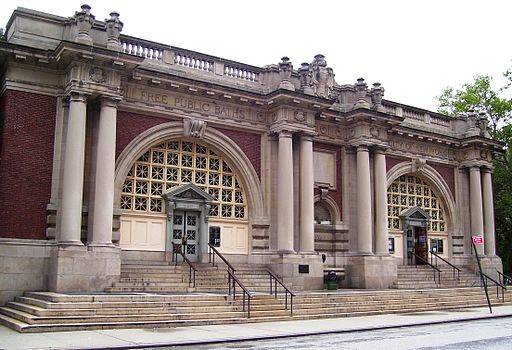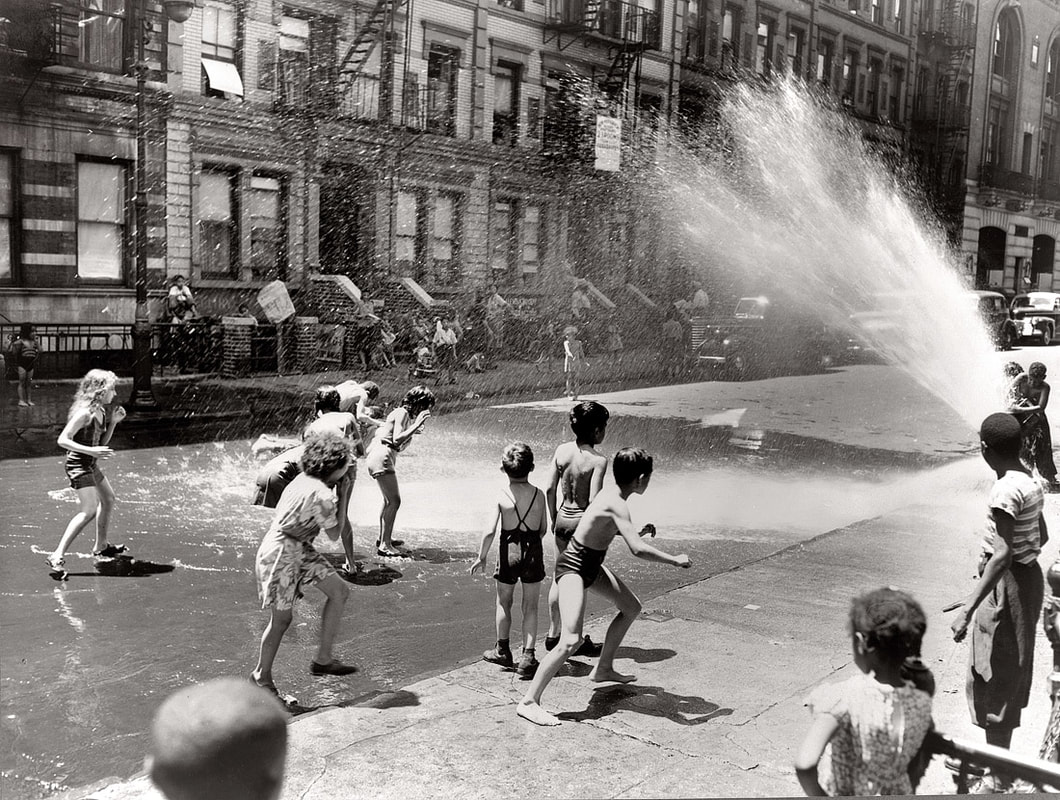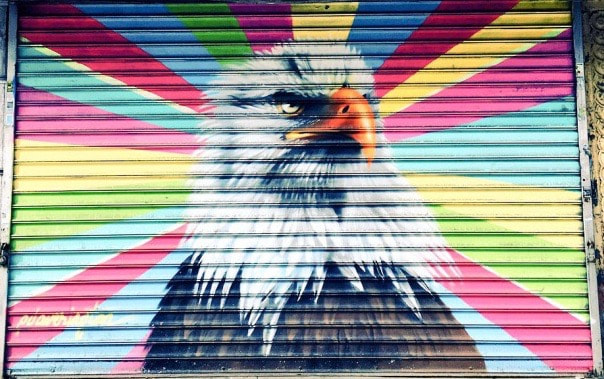|
By Laurie Lewis Imagine taking a bath or shower only once a month, once a year, or even less frequently. No imagination was required through most of history; that was reality. Although cultural taboos and superstitions about the evils of bathing were rampant in some societies, other communities encouraged regular washing. But immersion in a tub was a chore in the days before indoor plumbing; it necessitated carting and heating water and then disposing of it afterward. Frequent bathing was a luxury enjoyed mainly by those who could afford servants to handle the logistics as well as a place to put a tub. In 1849 Robert Minturn, a wealthy New York merchant, decided to do something to help the city’s lower classes get clean. He founded the People’s Bathing and Washing Association and built the first public bath and laundry facility in America, in the heart of the immigrant community. New Yorkers visited the place about 75,000 times, but it closed in a few years because the small fee was too much for most residents. About twenty years later, the city tapped its river borders to create free-floating public baths on both the Hudson River and the East River. By the end of the nineteenth century, Manhattan had fifteen such facilities, Brooklyn five. These baths refreshed impoverished New Yorkers from mid-June to mid-October. They were so popular that swimmers and splashers—few people actually came to get clean—were allowed to stay for only twenty minutes. But the growing pollution of the rivers necessitated a different solution. New York State passed a law in 1895 mandating that large cities establish public baths. The first facility in New York City under this law opened in 1901 on Rivington Street. By 1915 Manhattan had twelve more public baths, Brooklyn seven. These were magnificent structures, built during the City Beautiful era. A fundamental tenet of this movement was that lovely urban spaces would inspire good moral character. Given that many people considered cleanliness next to godliness, the architectural style seemed ideal for bathing facilities. Asser Levy Bathhouse "Free Public Baths" appears above the doorway on the left. The public baths generally had separate entrances for men and women, private changing spaces, showers as well as soaking tubs, and pools that children in particular enjoyed. The bathhouses were popular in the summer, especially on the hottest days, but little used during the rest of the year—proof that city dwellers used the facilities more for cooling off than for cleaning up. During the bathhouse building boom, the city was also experiencing a housing boom. A law now required a toilet in every new tenement apartment. (Our April newsletter described the tenement law.) Because they had to install indoor plumbing anyhow, some builders and landlords supplied a bathtub too. By the mid-twentieth century, most apartments had tubs, making public bathing facilities unnecessary. Only three public bathhouses were still in operation in the late 1950s. The last one, on Allen Street, closed in 1975. Many of these beautiful structures are still standing. Some are abandoned and inaccessible; others have been repurposed. Conversion of the landmarked Asser Levy bathhouse on East 23rd Street to swimming pools as part of a city recreation center was a logical move; several other former bathhouses also are now municipal rec centers. The East 11th Street bathhouse became a photographer’s studio. The Milbank Memorial Bath on East 38th Street now is home to the Indonesian Mission to the United Nations. Perhaps the most unexpected transformation occurred with the last operational bathhouse. The Allen Street facility is now the Church of Grace to Fujianese, a nondenominational Chinese house of worship. Shower in the Streets New Yorkers, especially children, have long enjoyed cooling off on a hot summer day by opening a fire hydrant. The delighted shouts of kids as they dash through the water notwithstanding, it’s not such a good idea. An open hydrant wastes a huge amount of water (about a thousand gallons a minute), can lower water pressure throughout the neighborhood, and might make it hard for firefighters to do their job. Who can deprive children of relief from the heat? Certainly not the New York City fire department. Local firehouses will install a spray cap on a hydrant, which turns it into an urban version of a lawn sprinkler. A spray cap uses only about 25 gallons of water per minute. That’s plenty to cool off heat-beat youngsters without depleting the neighborhood’s water. Photo by Roger Smith, 1943. July Tours Most Take a Walk New York tours cover 1 to 2 miles, last 2 to 2½ hours, and cost $25 per person. Advance registration is required. To register and to learn the meeting place, email the guide ([email protected] or [email protected]). Please arrive a little before the start time. Tours are cancelled if nobody has registered or if the weather is extreme; if in doubt, call or text Laurie (917-306-2868) or Alan (917-363-4292). Central Park: Marvels of the Northern Half The northern end of Central Park features some of the city's most surprising landscapes. Did you know there are woods, complete with a lovely creek with waterfalls, in the middle of Manhattan? Have you ever visited New York's own Secret Garden? Are you familiar with the role this area played in early American wars? In case you need a visual enticement, see pictures from a tour of this area on our May 9 blog. We enjoy the northern half of Central Park so much that we are offering tours there twice this month. If you're in the city on Independence Day but want to feel like you've escaped to the mountains, join Laurie on Wednesday, July 4, at 1 PM. Alan will lead a walk through northern Central Park on Thursday, July 19, at 10 AM. Please email the guide ([email protected] or [email protected]) to register and to learn the meeting location. 400 Years of History in Less Than a Mile Lower Broadway is like an illustrated history textbook, with the pages out of order. This stretch of Manhattan illustrates American history from colonial times to the present. Take a walk in the footsteps of George Washington and Alexander Hamilton. Hear stories about heroes like them, as well as rogues like William "Boss" Tweed. Look at beautiful buildings, including the first department store. Alan is offering this tour twice this month: on Saturday, July 7 and Saturday, July 28; both tours are at 10 AM. To reserve a place and to learn the meeting location, email him at [email protected]. Greenwich Village: In the Footsteps of Writers Many writers and other creative people have called Greenwich Village home. On this tour, you'll meander through charming West Village streets and peek into hidden cul-de-sacs as you learn where some famous writers—including Edna St. Vincent Millay, e.e. cummings, and Edward Albee—lived. Maybe the Village aura will spark your own creativity! Laurie is offering this tour on Saturday, July 14, at 1 PM. To reserve a place and to learn the meeting location, email her at [email protected]. Public Art of Lower Manhattan You don’t need to go to a museum to see great art. The streets of New York have a lot of art for anyone to enjoy. This interactive tour includes some of the most interesting and varied art in New York City. The artworks are as old as the doors of Trinity Church and as new as the SeaGlass Carousel. Alan gives this tour on Sunday, July 15, at 10 AM. Email him ([email protected]) to reserve your place and to learn the meeting location. Mansions of Fifth Avenue You can still find magnificent mansions built about a hundred years ago on the Upper East Side. These freestanding and rowhouse mansions are interspersed among luxury apartment buildings—mansions in the sky. Hear about these palatial homes and the people who lived in them—New York's own rich and famous. Laurie is offering this tour on Saturday, July 21, at 1 PM. Please email her ([email protected]) to register and to learn the meeting location. Green Spaces and Great Places on 42nd Street Walking from Bryant Park all the way to the East River, you'll discover parks among famous Midtown buildings. Learn why so many "pocket parks" occupy prime Manhattan real estate. Make a brief visit to several iconic buildings, including the public library, Grand Central, and the Chrysler Building. End by discovering Tudor City, a residential enclave that offers both green spaces and interesting architecture. Laurie gives this tour on Thursday, July 26, at 1 PM. To reserve a place and to learn the meeting location, email her at [email protected]. July Tours
Have you seen this bird?
Read Alan's June 26 blog to find out about it and other colorful feathered creatures. Comments are closed.
|
Archives
April 2024
|




